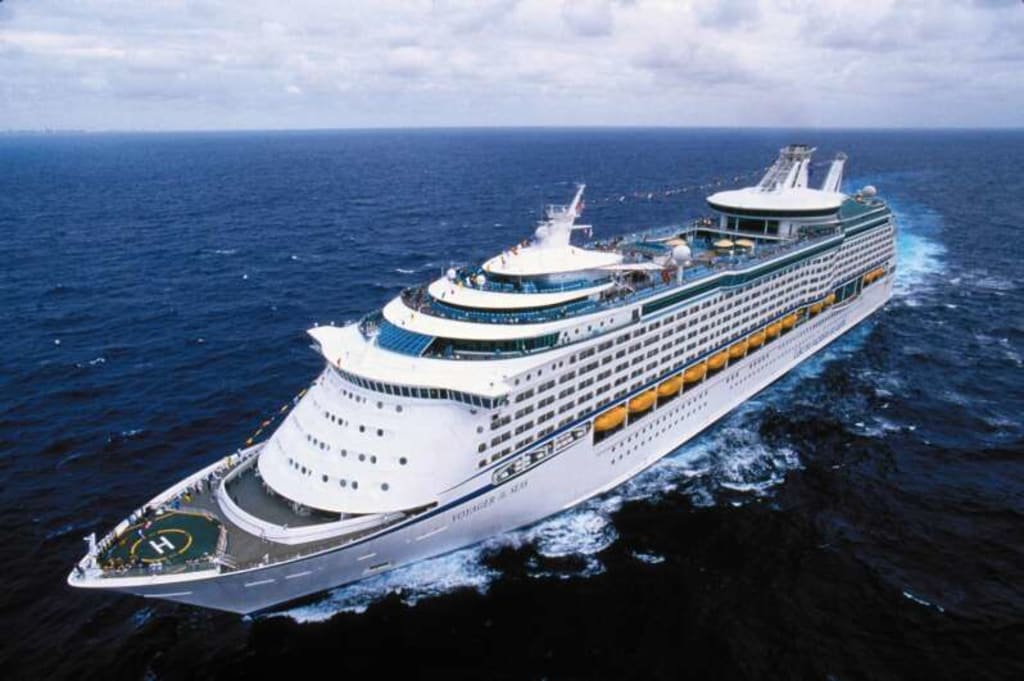
Running one of the world's biggest cruise ships is a complex and expensive undertaking that requires meticulous planning, advanced technology, and a significant amount of resources. The cost of operating such a vessel can reach up to $1 million per day. This high price tag can be attributed to several key factors.
1. Ship Acquisition and Construction:
One of the major expenses in operating a large cruise ship is the initial cost of acquiring and constructing the vessel. Building a modern cruise ship can take several years and costs hundreds of millions, if not billions, of dollars. The shipyard fees, labor costs, materials, and advanced technologies incorporated into the ship's design all contribute to the high initial investment.
2. Crew Wages and Training:
Cruise ships employ a large number of crew members to ensure smooth operations and provide top-notch service to the passengers. From deckhands to chefs, engineers to entertainers, each crew member needs to be paid a salary and provided with accommodation and meals on board. Additionally, crew members often undergo extensive training to meet safety standards, emergency procedures, and customer service expectations, all of which require ongoing investments.
3. Fuel and Energy Costs:
Large cruise ships consume a significant amount of fuel, which is a major ongoing expense. These ships rely on heavy fuel oil or marine diesel oil to power their engines, and fuel prices can fluctuate significantly. Furthermore, cruise lines are under increasing pressure to reduce their carbon footprint, leading to investments in cleaner and more efficient technologies, such as liquefied natural gas (LNG) propulsion systems or hybrid solutions. While these upgrades may help mitigate environmental impact, they often come with additional upfront and operational costs.
4. Maintenance and Repairs:
To ensure the safety and reliability of the vessel, regular maintenance and repairs are crucial. Cruise ships operate around the clock, with few breaks between voyages, so scheduled maintenance is often performed during brief dry-docking periods. Maintenance includes inspections, repairs, painting, and replacements of equipment or systems. Additionally, unexpected repairs due to wear and tear or unforeseen incidents can significantly drive up operational costs.
5. Port Fees and Services:
Cruise ships dock at various ports around the world, and each port charges fees for the use of their facilities and services. These fees can include docking charges, passenger embarkation and disembarkation fees, waste disposal fees, and security charges. The fees can vary depending on the location and popularity of the port, and they contribute to the overall operating expenses of the cruise ship.
6. Food, Supplies, and Onboard Amenities:
A cruise ship is essentially a floating resort, and providing high-quality food, supplies, and amenities to passengers is essential for customer satisfaction. Large quantities of food and beverages are required to cater to the passengers' needs, and the quality must be maintained consistently. Additionally, cruise ships offer a wide range of onboard activities, entertainment, and recreational facilities, all of which need to be maintained and upgraded regularly to keep passengers engaged and satisfied.
7. Marketing and Promotion:
Cruise lines spend a significant amount of money on marketing and promotion to attract passengers and fill cabins. Advertising campaigns, travel agent commissions, online marketing, and promotional events all contribute to the overall operating expenses. These investments are necessary to maintain a competitive edge in the cruise industry and keep the ship fully booked.
8. Insurance and Regulatory Compliance:
Operating a cruise ship involves various risks, including accidents, natural disasters, and unforeseen events. To protect against these risks, cruise lines must secure comprehensive insurance coverage, which can be expensive due to the size and complexity of the vessel. Additionally, cruise ships must comply with numerous international maritime regulations and safety standards, which require ongoing investments in training, certifications, and compliance programs.
9. Administrative and Overhead Costs:
Running a large cruise ship involves administrative tasks such as finance, human resources, legal, and IT support. The cruise line needs to maintain a dedicated team onshore to handle reservations, logistics, customer service, and other administrative functions. These overhead costs, including salaries, office space, and technology infrastructure, contribute to the overall operating expenses.
In conclusion, the high cost of operating one of the world's biggest cruise ships can be attributed to a combination of factors, including ship acquisition and construction, crew wages and training, fuel and energy costs, maintenance and repairs, port fees and services, food and supplies, marketing and promotion, insurance and regulatory compliance, and administrative and overhead costs. All these factors contribute to the daily expenses that make running a large cruise ship an expensive endeavor, often reaching up to $1 million per day.






Comments
There are no comments for this story
Be the first to respond and start the conversation.